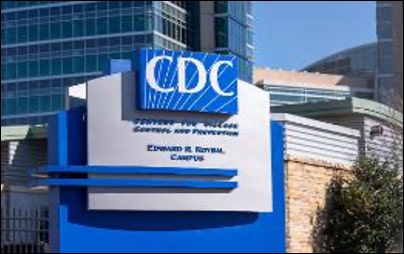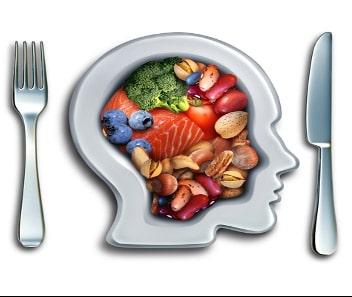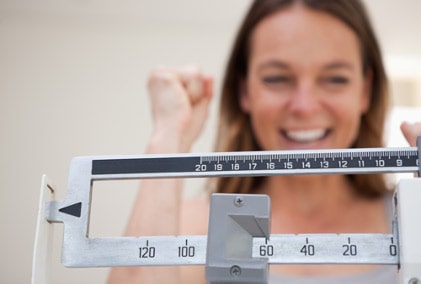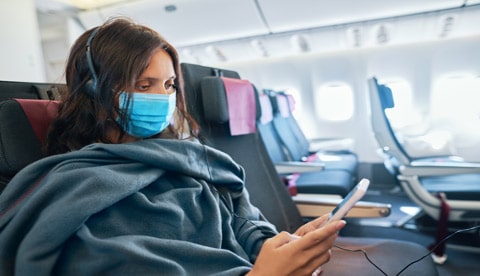
CDC updates guidelines on testing people without coronavirus symptoms
On September 18, 2020, the US Centers for Disease Control and Prevention changed its guidelines for testing people who do not have symptoms of coronavirus
The new language rolls back controversial changes made to the site last month. It once again stresses that anyone who has been in contact with an infected person should be tested for coronavirus.
Specifically, the new guideline says:
“Due to the significance of asymptomatic and pre-symptomatic transmission, this guidance further reinforces the need to test asymptomatic persons, including close contacts of a person with documented SARS-CoV-2 infection.”
This means that if you have been in close contact with a person with COVID-19, you should be tested—even if you have no symptoms. If you need assistance in locating a testing site, please contact Dr. Weisz at our office.
================================
Source: “Overview of Testing for SARS-CoV-2 (COVID-19).” Centers for Disease Control and Prevention. www.CDC.gov. 18 September 2020.

Foods that will keep your brain healthy
Did you know that you can prevent dementia by eating the right foods? Two existing regimens, the DASH (Dietary Approach to Stop Hypertension) Diet and the Mediterranean Diet have been combined into a hybrid by researchers at Rush University Medical Center, in Chicago, IL.
Both of the components of the MIND Diet (Mediterranean-DASH Intervention for Neurodegenerative Delay) have been shown to reduce the risk of Alzheimer’s disease. The researchers found that it was lowered in more than half (53%) of the patients who faithfully stuck to the diet.
Not only that, but it was found that the more brain-healthy food that a person ate, the higher he or she scored on a cognitive aptitude test. Those who adhered to the MIND Diet most strictly, slowed their rate of cognitive decline by 7.5 years compared to the control group.
Here is what foods you need to eat in order to make your brain more youthful:
Green Leafy Vegetables
Of all the brain-healthy food groups, green leafy vegetables provide the greatest protection from cognitive decline. Some good choices include kale, collard greens, and spinach.
Nuts
Nuts promote brain health due to their high flavonoid content. Walnuts, in particular, have more polyphenols than any other nut. The MIND diet calls for eating nuts as a snack on most days of the week.
Berries
Berries have demonstrated improved memory and a 2.5-year delay in cognitive decline particularly in older adults. Blueberries and strawberries especially good. Eat berries at least twice a week for the best brain benefit.
Beans
High consumption of legumes has been associated with increased cognitive performance, with the highest concentration of folate of any food. The MIND Diet recommends eating beans every other day.
Whole grains
Whole grains provide a sustained, stable flow of energy to the brain. Whole grains are also a rich source of vitamin E, antioxidants, B vitamins, minerals, phytochemicals, fats, and fiber. Eat three servings of whole grains each day.
Fish
Fish has been shown to reduce oxidative damage, and to increase synaptic proteins and dendritic spine density. Eating one fish meal (not batter-dipped or fried) a week is linked to slower cognitive decline, without much additional benefit to eating more fish per week.
Poultry
“Winner, winner, chicken dinner!” Poultry is a good source of lean protein and a high-protein diet may be protective of the brains of older adults before memory loss sets in. Eat chicken (not fried) or turkey at least twice a week as a main dish or a sandwich.
Olive oil
A Mediterranean diet featuring olive oil (or nuts) improved cognition scores better than a low-fat diet. To qualify as part of the MIND diet, olive oil should be used as the main source of oil in the kitchen.
Wine
Wine is one of the 10 best foods for your brain. Red wine has been associated with a lesser risk of dementia and better overall brain health when consumed in low doses. As such, the MIND diet allows one glass of wine per day.
What Foods to Avoid:
According to the MIND Diet, the five worst foods for your brain include:
- Red meat
- Butter and stick margarine
- Cheese
- Pastries and sweets
- Fried or fast food
The brain problems with these foods relate to their high amounts of saturated fats and trans fats.
“Fat composition that is higher in saturated and trans fats and lower in polyunsaturated and monounsaturated fats lead to blood brain barrier dysfunction.” the MIND authors wrote.
As with all diets, be sure to check with your doctor before embarking on the MIND Diet.
===========================
Source: Murphy, John.“Foods that fight memory loss.” MDLinx.com. 18 September 2020

A Small Weight Loss Can Mean BIG Health Benefits
A new study involving half a million adults has shown that losing just 13% of your body weight reduce the risk of type 2 diabetes by a whopping 40%.
Christiane Haase, Ph.D., a clinical scientist with Novo Nordisk in Denmark, who conducted the study said: “These results are extraordinary. A small amount of weight loss has been shown to be hugely beneficial.”
In addition to reducing the risk of type 2 diabetes, a modest weight loss was shown to reduce cases of sleep apnea by 22%-27%, hypertension by 18%-25%, and dyslipidemia (high cholesterol) by 20%-22%.
These results indicate that if you weigh 150 lbs and can lose 19.5 lbs., you will reduce your chances of developing diabetes by 40%.
The data shows that if doctors treat obesity first—rather than the complications caused by obesity—there will be a dramatic impact on public health. “A real game-changer,” said Dr. Haase.
The size of the study, of over 550,000 British adults in primary care, makes it unique. Subjects who had lost between 10 and 25% of their body weight were followed for 8 years to see how the weight-loss effected their long-term health. The researchers discovered a real-life reduction in risk of diabetes and other obesity-related conditions.
The results were presented during the virtual European and International Congress on Obesity (ECOICO 2020).
The researchers also found that it did not matter how the patients achieved and maintained their weight loss. The positive impact was shown regardless if the patient employed traditional diet and exercise, medications or surgical methods.
Of course, recognizing the benefits of even moderate weight loss is important, but devising ways of attaining that weight loss is an issue: Matt Peterson of the American Diabetes Association observed: “Finding effective strategies to achieve and maintain long-term weight loss and maintenance remains a significant challenge.”
The researchers looked at the risk reduction for various co-morbidities after weight loss compared to before weight loss. They also examined the risk reductions after weight loss compared to someone who had always had a median 13% lower weight.
Effectively, the analysis provided a measure of the effect of risk reduction due to weight loss compared to having that lower weight as a stable weight.
“The analysis asks if the person’s risk was reversed by the weight loss to the risk associated with that of the lower weight level,” explained Haase.
“We found that the risks of type 2 diabetes, were reversed,” said Haase.
This means that if you bring your weight down from 150 lbs. to 130 lbs., your risk of developing diabetes will become the same as a person whose adult weight had always been stable at 130 lbs.
The benefits of weight loss also apply to those patients who already have type 2 diabetes. The results of a 13% weight loss among such patients, the researcher found was swift and dramatic.
“Type 2 diabetes is very sensitive to weight loss and improvements are obvious in weeks to months,” Haase pointed out.
She acknowledged, however, that losing weight is difficult and that support is important: “We need for the government to urgently review the providing of weight management services and take action to address the barriers to accessing them.”
For the research, data from over half a million patients from 674 general practices in the UK were matched to hospital admission and prescription records to determine the co-relationships.
The average age of the population was 54. About half had hypertension, 40% had high cholesterol, 20% had type 2 diabetes, and fewer than 10% suffered from sleep apnea, osteoarthritis, or cardiovascular disease. All participants had a body mass index between 25 and 50 at the outset of the study.
All patients had been advised to lose weight and responded in a various ways. Some employed diet and exercise, while others were referred to a dietician. Some patients used anti-obesity medications while less than 1% underwent bariatric surgery.
Patients were divided into two groups. One group whose weight remained stable and the other who lost between 10% and 25% of their body weight. The average weight loss recorded by the patients in the second group was 13%. The medical histories of the two groups was then compared. The results were dramatic.
“We found that in the weight loss group, the risks of type 2 diabetes, high cholesterol and hypertension were reversed,” said Haase. The risk of sleep apnea and osteoarthritis were not as dramatically effected.
The benefits of weight loss do not appear at the same speed, the researchers learned. Type 2 diabetes is very sensitive to weight loss and improvements are obvious in weeks to months. By contrast, reductions in the risk of other disorders, like sleep apnea risk take longer.
Lucy Chambers, PhD, head of research communications at Diabetes UK, commented on the study: “We’ve known for a long time that carrying extra weight can increase your risk of developing type 2 diabetes, hypertension, high cholesterol and other disorders. This new study adds to the extensive body of evidence showing that losing some of this weight is associated with reduced risk.”
=========================
Source: McCall, Becky. “Small Weight Loss Produces Impressive Drop in Type 2 Diabetes Risk.” Medscape.com. 10 September 2020.
ECOICO 2020. Presented September 1-4, 2020. Abstract 0497.

Where Do People Catch COVID?
The TOP Six Places.
Although we are still learning the answers to this important question, experts are using contact tracing data to accurately understand what is taking place with Coronavirus transmission. Here are the top six places where COVID was contracted:
No. 1. Your Home.
According to the International Journal of Infectious Disease, 70% of all infections occurred in the household. This is not surprising because it is at home where you spend most of your time. You are also in contact with family members, so less likely to socially distance.
No. 2. Shared Heavy Breathing Places
Hot spots include bars, clubs, gyms and church services. The CDC has tracked numerous such “super-spreader” events at places like a church choir practice. Close proximity coupled with the act of singing added to the high infection rate.
No. 3. Crowds
Outside gatherings are better than indoor, but both are considered hazardous. The CDC was able to trace many COVID-19 cases to Myrtle Beach, South Carolina, for example, which became a “hot spot” because of large crowds gathering on the beach over the summer.
No. 4. Schools
As schools and colleges have re-opened over the past month, there has been some increase in COVID transmission among both students and staff. Many school systems across the country have shut down individual schools and implemented remote learning due to COVID spread.
No. 5. Poorly Ventilated Indoor Space
Adequate indoor ventilation is important to stop the spread of the virus. If you cannot socially distance and there’s low ventilation in an indoor space, the CDC says the COVID-19 risk is greater and you should reconsider entering that space.
No. 6. Nursing Homes and Hospitals
Because most healthcare facilities did not have an adequate infection control program in place prior to the start of the pandemic, they have become primary sources of COVID outbreaks in the U.S. The good news is that now hospitals and other healthcare facilities practice stringent infection control to reduce COVID-19 transmission, including infection screening and separate COVID care units.
=========================
SOURCE: Warren, Karon. “Where are people catching COVID?” Healthgrades.com. 15 September 2020.

What are the chances of catching COVID-19 on an airplane?
On August 28, Florida governor, Ron DeSantis declared: “Airplanes have not been vectors for the spread of the coronavirus. I think that flying is something that is safe for people to do.” Is he right?
According to Harvard professor, Joseph Allen, airplanes are “excellent vectors for viral spread.” A vector is something that spreads the virus from location to location. The governor’s office has backed up DeSantis’s claim by citing the Florida Department of Health’s contact tracing program. No evidence has surfaced, they state, of anyone having been infected while traveling on a commercial aircraft.
The reliability of the FDH’s contact tracing program has been repeatedly called into question by the media.
Airplanes provide generally safe environments when it comes to air quality, but experts said the risk for infection depends largely on policies airlines may have in place regarding passenger seating, masking and boarding procedures.
So? How safe are commercial airplanes?
“If you look at the science, you see few outbreaks on planes,” Allen said. “Planes are not the hotbed of infectivity that people think it is.”
Airlines frequently note that commercial planes are equipped with HEPA filters, the CDC-recommended air filters used in hospital isolation rooms. HEPA filters capture 99.97% of airborne particles and substantially reduce the risk of viral spread. In addition, the air in plane cabins is completely changed over 10 to 12 times per hour, raising the air quality above that of a normal building.
But controlling air quality is not enough. If an airline isn’t keeping middle seats open or enforcing mask use, flying can actually be rather dangerous according to Richard Corsi, the dean of engineering at Portland State University. Currently, the domestic airlines keeping middle seats open include Delta, Hawaiian, Southwest and JetBlue.
“Whenever you cough, talk or breathe, you’re sending out droplets,’ said Qingyan Chen, professor of mechanical engineering at Purdue University. “These droplets are in the cabin all the time.” This makes additional protective measures such as mask-wearing all the more necessary.
Even though flying is a relatively low-risk activity, traveling should still be avoided unless absolutely necessary. Traveling of any sort these days is still dangerous.
“Anything that puts you in contact with more people is going to increase your risk,” said Cindy Prins, a clinical associate professor of epidemiology at the University of Florida. The real danger of traveling isn’t the flight itself. Going through security and waiting at the gate for your plane are both likely to put you in close contact with people and increase your chances of contracting the virus. In addition, boarding — when the plane’s ventilation system is not running and people are unable to stay distanced from one another — is one of the riskiest parts of the travel process.
“Minimizing this time period is important to reduce exposure,” wrote Corsi. “Get to your seat with your mask on and sit down as quickly as possible.”
Final tip: When the flight attendant offers you a snack, put it in your bag and eat it once you get home so you don’t have to remove your face mask during the flight.
================================
Source: Kim, Noah Y. “What Is the Risk of Catching the Coronavirus on a Plane?” Medscape.com. 10 September 2020.September 10, 2020.

A Great 20-minute Workout For Beginners
Here’s a great workout for people who haven’t been to the gym for a while.. The last thing you want to do is go too hard, too fast. There’s a risk of injury, and, more importantly, discouragement.
This routine can be done at home and starts with a cardio warmup followed by three sets of strength exercises for a well-rounded, full-body routine. Start at two times per week and build from there.
2 minutes: Cardio warmup
Complete one minute of each of the following exercises to get your heart pumping and muscles loose.
Low-impact jumping jacks
To perform, simultaneously step your right leg out and, with your right arm bent at a 45-degree angle, bring your right hand above your head. Return to the start and repeat on the left side. Go as fast as you can while maintaining good form.
To perform, stand with your arms bent at your sides and complete these moves in sequence:
- right knee up
- left knee up
- right heel to backside
- left heel to backside
18 minutes: The moves
After you’re good and warm, do the following five exercises with 30 to 45 seconds of rest between each exercise and 30 seconds of rest between each set
A precursor to the squat, a bridge takes the pressure off your lower back but allows you to work the same muscles: your core, glutes, and hamstrings. Remember to go slow and stay controlled, and squeeze your glutes at top for maximum benefit.
Directions
Start by lying with your back on your mat, knees bent with feet on the floor and palms facing down at your sides.
As you inhale, push through your feet and raise your butt and back off the ground. At the top, your body should form a straight line between your knees and shoulders.
Slowly lower back down to the ground and repeat 10 reps for 3 sets total.
Wall squat
Another precursor to a standard squat, performing this move against the wall provides extra stabilization while still allowing you to strengthen your glutes, quads, hamstrings, and calves.
Directions
Position yourself with your back on a wall and feet a large step out in front of you.
Lowering down against the wall, squat down until your knees reach a 90-degree angle.
Hold for 5 seconds, then extend your legs and return to start. Repeat 10 reps for 3 sets total.
45-degree incline row